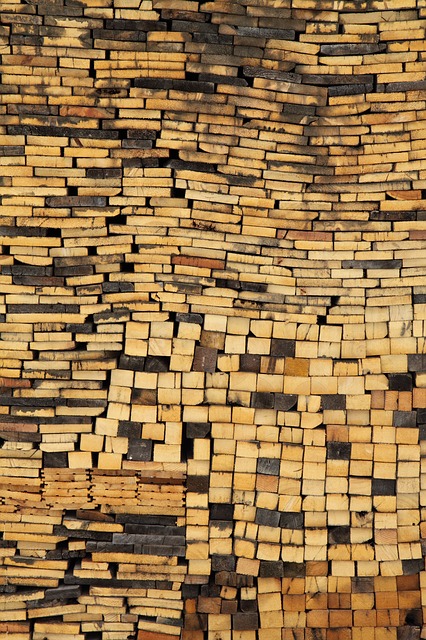تابوت العهد
تابوت العهد (بالعبرية: אָרוֹן הַבְּרִית ʾĀrôn Habbərît، النطق المعاصر Aron Habrit؛ بالإنگليزية: Ark of the Covenant)، ويُعهد أيضاً بإسم تابوت الشهادة، هوخزانة موصوفة في سفر الخروج كانت تحتوي على ألواح من الحجر وهوالذي قد نقشت عليه الوصايا العشر. وفقاً لبعض التفسيرات التقليدية لسفر الخروج،سفر الأعداد،والرسالة إلى العبرانيين، كان التابوت يحتوي كذلك على عصا هارون، جرة من المن وأول لفة من التوراة كما هومكتوب من قبل موسى، إلا حتى أول ما خط في سفر الملوك يقول أنه في عهد الملك سليمان، ورد حتى لوحين فقط في التابوت وردتا من الوصايا. وفقا لسفر الخروج، تم بناء التابوت في الأمر من الله، وفقا للتعليمات المعطاة لموسى في الكتاب المقدس عند جبل سيناء. وكان الله قد نطق لموسى على اتصال "من بين اثنين من كروبايم" المدون على غطاء تابوت ل.
وترجع رواية الكتاب المقدس أنه بعد نحوعام على خروج بني إسرائيل من مصر، تم بناء التابوت وفقاً لنمط معين من موسى من الله عندما هبط بنوإسرائيل عند سفح جبل سيناء. بعد ذلك تم جعله مطلياً بالمضى وغمره بالسنط وحمل الصدر من قبل اللاويين حوالي 2،000 ذراع مقدماًُ من الناس عندما بدأوالمسير أوقبل الجيش الإسرائيلي، ومجموعة من الرجال المقاتلون. عندما كان يغيب التابوت من قبل اللاويين في السرير من نهر الأردن ، إنشطرت المياه كما قد عمل الله عندما شطر مياه البحر الأحمر، وفتح طريقا للناس كاملا للمرور من خلال (يش 3: 15-16؛ 4:7-18). جدران مدينة أريحا اهتزت الأرض مع عدم وجود أكثر من يصرخ من الجيش بعد حتى عرضت تابوت العهد من حولهم لمدة سبعة أيام من قبل اللاويين يرافقه سبعة كهنة سبعة أبواق من قرون الكباش (يش 6:4-20). عندما قامت ، كانت مخبأة وكان التابوت دائما تحت حجاب كبير مصنوع من الجلود والقماش الأزرق، دائما مخبأة بعناية، حتى من وجهة نظر الكهنة واللاويين الذين قاموا به. لا توجد مراجع معاصرة خارج الكتاب المقدس حول التابوت.
في الروم الكاثوليك والأرثوذكسية الشرقية الكنائس، ومريم العذراء وأحيانا يشار إليها باسما استعاريا تابوت العهد، في هذا فولدت يسوع المسيح كما ورد متشابها إلى المحتويات الملموسة الأصلية للتابوت، كما ورد في كتاب الوحي و(في الكاثوليكية الرومانية) في النادىء لوريتو
السرد التوراتي
تشييده ووصفه
According to the Book of Exodus, Yahweh instructed Moses on Mount Sinai during his 40-day stay upon the mountain within the thick cloud and darkness where God was (Ex. 19:20; 24:18) and he was shown the pattern for the tabernacle and furnishings of the Ark to be made of shittim wood to house the Tablets of Stone. Moses instructed Bezalel and Oholiab to construct the ark (Exodus 31).
The Book of Exodus gives detailed instructions on how the Ark is to be constructed. It is to be 2½ cubits in length, 1½ in breadth, and 1½ in height (approximately 131×79×79 cم or 52×31×31 بوصة). Then it is to be plated entirely with gold, and a crown or molding of gold is to be put around it. Four rings of gold are to be attached to its four feet—two on each side—and through these rings staves of shittim-wood overlaid with gold for carrying the Ark are to be inserted; and these are not to be removed. A golden cover, a kapporet (traditionally "Mercy Seat" in Christian translations) adorned with golden cherubim, is to be placed above the Ark. The Ark is finally to be placed behind a veil (Parochet), a full description of which is also given at Exodus 25.
انتنطق التابوت
After its creation by Moses, the Ark was carried by the Israelites during their 40 years of wandering in the desert. Whenever the Israelites camped, the Ark was placed in a special and sacred tent, called the Tabernacle.
When the Israelites, led by Joshua toward the Promised Land, arrived at the banks of the River Jordan, the Ark was carried in the lead preceding the people and was the signal for their advance (Joshua 3:3, 6). During the crossing, the river grew dry as soon as the feet of the priests carrying the Ark touched its waters, and remained so until the priests—with the Ark—left the river after the people had passed over (Josh. 3:15-17; 4:10, 11, 18). As memorials, twelve stones were taken from the Jordan at the place where the priests had stood (Josh. 4:1-9).
In the Battle of Jericho, the Ark was carried round the city once a day for seven days, preceded by the armed men and seven priests sounding seven trumpets of rams' horns (Josh. 6:4-15). On the seventh day, the seven priests sounding the seven trumpets of rams' horns before the Ark compassed the city seven times and, with a great shout, Jericho's wall fell down flat and the people took the city (Josh. 6:16-20). After the defeat at Ai, Joshua lamented before the Ark (Josh. 7:6-9). When Joshua read the Law to the people between Mount Gerizim and Mount Ebal, they stood on each side of the Ark. The Ark was again set up by Joshua at Shiloh, but when the Israelites fought against Benjamin at Gibeah, they had the Ark with them and consulted it after their defeat.
إستيلاء الفلسطينيين عليه
The Ark is next spoken of as being in the Tabernacle at Shiloh during Samuel's apprenticeship (1 Sam. 3:3). After the settlement of the Israelites in Canaan, the Ark remained in the Tabernacle at Gilgal for a season before being removed to Shiloh until the time of Eli, between 300 and 400 years (Jeremiah 7:12), when it was carried into the field of battle, so as to secure, as they had hoped, victory to the Hebrews. The Ark was taken by the Philistines (1 Sam. 4:3-11) who subsequently sent it back after retaining it for seven months (1 Sam. 5:7, 8) because of the events said to have transpired.
After their first defeat at Eben-ezer, the Israelites had the Ark brought from Shiloh, and welcomed its coming with great rejoicing. In the second battle, the Israelites were again defeated, and the Philistines captured the Ark (1 Sam. 4:3-5, 10, 11). The news of its capture was at once taken to Shiloh by a messenger "with his clothes rent, and with earth upon his head." The old priest, Eli, fell dead when he heard it; and his daughter-in-law, bearing a son at the time the news of the capture of the Ark was received, named him Ichabod—explained as "The glory has departed Israel" in reference to the loss of the Ark (1 Sam. 4:12-22).
The Philistines took the Ark to several places in their country, and at each place misfortune befell them (1 Sam. 5:1-6). At Ashdod it was placed in the temple of Dagon. The next morning Dagon was found prostrate, bowed down, before it; and on being restored to his place, he was on the following morning again found prostrate and broken. The people of Ashdod were smitten with hemorrhoids; a plague of mice was sent over the land (1 Sam. 6:5). The affliction of boils was also visited upon the people of Gath and of Ekron, whither the Ark was successively removed (1 Sam. 5:8-12).
After the Ark had been among them for seven months, the Philistines, on the advice of their diviners, returned it to the Israelites, accompanying its return with an offering consisting of golden images of the tumors and mice wherewith they had been afflicted. The Ark was set in the field of Joshua the Beth-shemite, and the Beth-shemites offered sacrifices and burnt offerings (1 Sam. 6:1-15). Out of curiosity the men of Beth-shemesh gazed at the Ark; and as a punishment, seventy of them (fifty thousand and seventy in some mss.) were smitten by the Lord (1 Sam. 6:19). The Bethshemites sent to Kirjath-jearim, or Baal-Judah, to have the Ark removed (1 Sam. 6:21); and it was taken to the house of Abinadab, whose son Eleazar was sanctified to keep it. Kirjath-jearim remained the abode of the Ark for twenty years. Under Saul, the Ark was with the army before he first met the Philistines, but the king was too impatient to consult it before engaging in battle. In 1 Chronicles 13:3 it is stated that the people were not accustomed to consult the Ark in the days of Saul.
في أيام الملك داود
At the beginning of his reign, King David removed the Ark from Kirjath-jearim amid great rejoicing. On the way to Zion, Uzzah, one of the drivers of the cart whereon the Ark was carried, put out his hand to steady the Ark, and was smitten by God for touching it. David, in fear, carried the Ark aside into the house of Obed-edom the Gittite, instead of carrying it on to Zion, and there it stayed three months (2 Samuel 6:1-11; 1 Chronicles 13:1-13).
On hearing that God had blessed Obed-edom because of the presence of the Ark in his house, David had the Ark brought to Zion by the Levites, while he himself, "girded with a linen ephod," "danced before the Lord with all his might" and in the sight of all the public gathered in Jerusalem — a performance that caused him to be scornfully rebuked by his first wife, Saul's daughter Michal (2 Sam. 6:12-16, 20-22; 1 Chron. 15). In Zion, David put the Ark in the tabernacle he had prepared for it, offered sacrifices, distributed food, and blessed the people and his own household (2 Sam. 6:17-20; 1 Chron. 16:1-3; 2 Chron. 1:4).
The Levites were appointed to minister before the Ark (1 Chron. 16:4). David's plan of building a temple for the Ark was stopped at the advice of God (2 Sam. 7:1-17; 1 Chron. 17:1-15; 28:2, 3). The Ark was with the army during the siege of Rabbah (2 Sam. 11:11); and when David fled from Jerusalem at the time of Absalom's conspiracy, the Ark was carried along with him until he ordered Zadok the priest to return it to Jerusalem (2 Sam. 15:24-29).
في هيكل سليمان
When Abiathar was dismissed from the priesthood by King Solomon for having taken part in Adonijah's conspiracy against David, his life was spared because he had formerly borne the Ark (1 Kings 2:26). Solomon worshipped before the Ark after his dream in which God promised him wisdom (1 Kings 3:15).
During the construction of Solomon's Temple, a special inner room, named Kodesh Hakodashim (Eng. Holy of Holies), was prepared to receive and house the Ark (1 Kings 6:19); and when the Temple was dedicated, the Ark—containing the original tablets of the Ten Commandments—was placed therein (1 Kings 8:6-9). When the priests emerged from the holy place after placing the Ark there, the Temple was filled with a cloud, "for the glory of the Lord had filled the house of the Lord" (1 Kings 8:10-11; 2 Chron. 5:13, 14).
When Solomon married Pharaoh's daughter, he caused her to dwell in a house outside Zion, as Zion was consecrated because of its containing the Ark (2 Chron. 8:11). King Josiah also had the Ark put in the Temple (2 Chron. 35:3), from which it appears to have been removed by one of his predecessors (cf. 2 Chron. 33-34 and 2 Kings 21-23).
الغزوالبابلي وما بعده
In 597 BC, the Babylonians destroyed Jerusalem and Solomon's Temple. There is no record of what became of the Ark in the Books of Kings and Chronicles. But the Greek 3rd Book of Ezra (1 Esdras) suggests that Babylonians:
...took all the holy vessels of the Lord, both great and small, and the ark of God, and the king's treasures, and carried them away into Babylon.
- —1 Esdras 1:54
In Rabbinic Literature, the final disposition of the Ark is disputed. Some rabbis hold that it must have been carried off to Babylon, while others hold that it must have been hidden lest it be carried off into Babylon and never brought back.
إشارات لتابوت العهد في الكتاب المقدس
التناخ اليهودي
The Ark is first mentioned in the Book of Exodus, and then numerous times in Deuteronomy, Joshua, Judges, I Samuel, II Samuel, I Kings, I Chronicles, II Chronicles, Psalms and Jeremiah.
In the Book of Jeremiah, it is referenced by Jeremiah, who, speaking in the days of Josiah (Jer. 3:16), prophesied a future time, possibly the end of days, when the Ark will no longer be talked about or be made again:
And it shall be that when you multiply and become fruitful in the land, in those days - the word of the LORD - they will no longer say, 'The Ark of the Covenant of the LORD' and it will not come to mind; they will not mention it, and will not recall it, and it will not be used any more.
Rashi comments on this verse that "The entire people will be so imbued with the spirit of sanctity that God's Presence will rest upon them collectively, as if the congregation itself was the Ark of the Covenant."
كتاب المكابيين الثاني
According to the Jewish Deuterocanonical book Second Maccabees, the Greek text in the Septuagint, at the beginning of chapter 2:
The records show that it was the prophet Jeremiah who ... prompted by a divine message ... gave orders that the Tent of Meeting and the ark should go with him. Then he went away to the mountain from the top of which Moses saw God's promised land. When he reached the mountain, Jeremiah found a cave-dwelling; he carried the tent, the ark, and the incense-altar into it, then blocked up the entrance. Some of his companions came to mark out the way, but were unable to find it. When Jeremiah learnt of this he reprimanded them. "The place shall remain unknown", he said, "until God finally gathers his people together and shows mercy to them. The Lord will bring these things to light again, and the glory of the Lord will appear with the cloud, as it was seen both in the time of Moses and when Solomon prayed that the shrine might be worthily consecrated."
II Maccabees 2:4–8 (New English Bible, 1971)
The "mountain from the top of which Moses saw God's promised land" would be Mount Nebo, located in what is now Jordan.
العهد الجديد المسيحي
In the New Testament, the Ark is mentioned in the Letter to the Hebrews and the Revelation to St. John. Hebrews 9:4 states that the Ark contained "the golden pot that had manna, and Aaron's rod that budded, and the tablets of the covenant." Revelation 11:19 says the prophet saw God's temple in heaven opened, "and the ark of his covenant was seen within his temple."
A number of Roman Catholic writers connect this verse with the Woman of the Apocalypse in Revelation 12:1, which immediately follows, and argue that the Blessed Virgin Mary is the "Ark of the New Covenant." Carrying the saviour of mankind within her, she herself became the Holy of Holies. This is the interpretation given in the fourth century by Saint Ambrose, Saint Ephraem of Syria and Saint Augustine.
It is also believed by Roman Catholics that Athanasius the bishop of Alexandria wrote about the connections between the Ark and the Virgin Mary: "O noble Virgin, truly you are greater than any other greatness. For who is your equal in greatness, O dwelling place of God the Word? To whom among all creatures shall I compare you, O Virgin? You are greater than them all O (Ark of the) Covenant, clothed with purity instead of gold! You are the Ark in which is found the golden vessel containing the true manna, that is, the flesh in which Divinity resides" (Homily of the Papyrus of Turin). However, some question the authenticity of this work and suggest it is an example of the writing of yet another Pseudo-Athanasius.
القرآن
In chapter 2 (Sura 2) of the Islamic Quran (Verse 248), the Children of Israel, at the time of Samuel and Saul, were given back the Tabut E Sakina (the casket of Shekhinah) which contained remnants of the household of Musa (Moses) and Harun (Aaron) carried by angels which confirmed peace and reassurance for them from their Lord. The Qur'an states:
And (further) their Prophet said to them: "A Sign of his authority is that there shall come to you the Ark of the Covenant, with (an assurance) therein of security (Sakina) from your Lord, and the relics left by the family of Moses and the family of Aaron, carried by angels. In this is a symbol for you if ye indeed have faith.
The Islamic scholar Al Baidawi mentioned that the sakina could be Tawrat, the Books of Moses. According to Al-Jalalan, the relics in the Ark were the fragments of the two tablets, rods, robes, shoes, mitres of Moses and the vase of manna. Al-Tha'alibi, in Qisas Al-Anbiya (The Stories of the Prophets), has given an earlier and later history of the Ark.
According to most Muslim scholars, the Ark of the Covenant has a religious basis in Islam, and Islam gives it special significance. A Shia sect of Muslims believe that it will be found by Mahdi near the end of times from Lake Tiberias.
مواقع محتملة
Since its disappearance from the Biblical narrative, there have been a number of claims of having discovered or of having possession of the Ark, and several possible places have been suggested for its location.
جبل نبو
2 Maccabees 2:4-10, written around 100 BC, says that the prophet Jeremiah, "being warned by God" before the Babylonian invasion, took the Ark, the Tabernacle, and the Altar of Incense, and buried them in a cave on Mount Nebo, informing those of his followers who wished to find the place that it should remain unknown "until the time that God should gather His people again together, and receive them unto mercy." Mount Nebo is also described in the Bible (Deuteronomy 34) as the site from which Moses views the Promised Land, and apparently also is his final burial place. Mount Nebo is approximately 29 miles (47 km) slightly south of due east from Jerusalem, near the east bank of the Jordan River.
إثيوپيا
The Ethiopian Orthodox Church claims to possess the Ark of the Covenant, or Tabot, in Axum, not far from the border with Eritrea. The object is currently kept under guard in a treasury near the Church of Our Lady Mary of Zion. Replicas of the Axum tabot are kept in every Ethiopian church, each with its own dedication to a particular saint; the most popular of these include Mary, George and Michael.
The Kebra Nagast, composed to legitimise the new dynasty ruling Ethiopia following its establishment in 1270, narrates how the real Ark of the Covenant was brought to Ethiopia by Menelik I with divine assistance, while a forgery was left in the Temple in Jerusalem. Although the Kebra Nagast is the best-known account of this belief, the belief predates the document. Abu al-Makarim, writing in the last quarter of the twelfth century, makes one early reference to this belief that they possessed the Ark. "The Abyssinians possess also the Ark of the Covenant", he wrote, and, after a description of the object, describes how the liturgy is celebrated upon the Ark four times a year, "on the feast of the great nativity, on the feast of the glorious Baptism, on the feast of the holy Resurrection, and on the feast of the illuminating Cross."
In the 1992 book The Sign and the Seal by controversial British writer Graham Hancock suggests, contrary to the Kebra Nagast, that the ark spent several years in Egypt before it came to Ethiopia via the Nile River, where it was kept in the islands of Lake Tana for about four hundred years and finally taken to Axum. Archaeologist John Holladay of the University of Toronto called Hancock's theory "garbage and hogwash," while Edward Ullendorff, a former Professor of Ethiopian Studies at the University of London, said he "wasted a lot of time reading it."
On 25 June 2009, the patriarch of the Orthodox Church of Ethiopia, Abune Paulos, said he would announce to the world the next day the unveiling of the Ark of the Covenant, which he said had been kept safe and secure in a church in Axum, Ethiopia. The following day, on 26 June 2009, the patriarch announced that he would not unveil the Ark after all, but that instead he could attest to its current status.
جنوب أفريقيا
The Lemba people of South Africa and Zimbabwe have claimed that their ancestors carried the Ark south, calling it the ngoma lungundu or "voice of God", eventually hiding it in a deep cave in the Dumghe mountains, their spiritual home.
On 14 April 2008, in a UK Channel أربعة documentary, Tudor Parfitt, taking a literalist approach to the Biblical story, described his research into this claim. He says that the object described by the Lemba has attributes similar to the Ark. It was of similar size, was carried on poles by priests, was not allowed to touch the ground, was revered as a voice of their God, and was used as a weapon of great power, sweeping enemies aside.
In his book The Lost Ark of the Covenant (2008), Parfitt also suggests that the Ark was taken to Arabia following the events depicted in the Second Book of Maccabees, and cites Arabic sources which maintain it was brought in distant times to Yemen. One Lemba clan, the Buba, which was supposed to have brought the Ark to Africa, have a genetic signature called the Cohen Modal Haplotype. This suggests a male Semitic link to the Levant. Lemba tradition maintains that the Ark spent some time in Sena in Yemen. Later, it was taken across the sea to East Africa and may have been taken inland at the time of the Great Zimbabwe civilization. According to their oral traditions, some time after the arrival of the Lemba with the Ark, it self-destructed. Using a core from the original, the Lemba priests constructed a new one. This replica was discovered in a cave by a Swedish German missionary named Harald von Sicard in the 1940s and eventually found its way to the Museum of Human Science in Harare. Parfitt had this artifact radio-carbon dated to about 1350, which coincided with the sudden end of the Great Zimbabwe civilization.
أوروپا
كاتدرائية شارتر، باريس
French author Louis Charpentier claimed that the Ark was taken to Chartres Cathedral by the Knights Templar.
رن-لو-شاتو، ثم أمريكا
Several recent authors have theorised that the Ark was taken from Jerusalem to the village of Rennes-le-Château in Southern France. Karen Ralls has cited Freemason Patrick Byrne, who believes the Ark was moved from Rennes-le-Château at the outbreak of World War I to America.
روما
The Ark of the Covenant was said to have been kept in the Basilica of St. John Lateran, surviving the pillages of Rome by Genseric and Alaric I but lost when the basilica burned.
المملكة المتحدة
In 2003, author Graham Phillips hypothetically concluded that the Ark was taken to Mount Sinai in the Valley of Edom by the Maccabees. Phillips claims it remained there until the 1180s, when Ralph de Sudeley, the leader of the Templars found the Maccabean treasure at Jebel al-Madhbah, and returned home to his estate at Herdewyke in Warwickshire, England taking the treasure with him.
أيرلندا
During the turn of the 20th century British Israelites carried out some excavations of the Hill of Tara in Ireland looking for the Ark of the Covenant—the Royal Society of Antiquaries of Ireland campaigned successfully to have them stopped before they destroyed the hill.
مصر
معبد مقبرة عنخ آمون
In 1922 in the Egyptian Valley of the Kings the tomb of Tutankhamun (KV62) was opened by Howard Carter and Lord Carnarvon. Among the artifacts was a processional ark, listed as Shrine 261, the Anubis Shrine. Almost immediately after publication of the photographs of this sensational archaeological find some claimed that the Anubis Shrine could be the Ark of the Covenant. John M. Lundquist, author of The Temple of Jerusalem: past, present, and future (2008), discounts this idea. The Anubis Shrine measures 95 centiمترs (37 بوصة) long, 37 centiمترs (15 بوصة) wide, and 54.3 centiمترs (21.4 بوصة) high in the shape of a pylon. The Biblical Ark of the Covenant is approximately 133 centiمترs (52 بوصة) long, 80 centiمترs (31 بوصة) wide, and 80 centiمترs (31 بوصة) high in the shape of a rectangular chest.
He points out that Shrine 261 is not strictly analogous to the Ark of the Covenant: it can only be said that the Anubis Shrine is "ark-like", constructed of wood, gilded and gessoed, stored within a sacred tomb, "guarding" the treasury of the tomb (and not the primary focus of that environment), that it contains compartments within it that store and hold sacred objects, that it has a figure of Anubis on its lid, and that it was carried by two staves permanently inserted into rings at its base and borne by eight priests in the funerary procession to Tutankhamun's tomb. Its value is the insight it provides to the ancient culture of Egypt.
في الثقافة العامة
The Ark of the Covenant is the MacGuffin of Steven Spielberg's 1981 film Raiders of the Lost Ark, and the same prop also appears in a cameo in a later sequel in Indiana Jones and the Kingdom of the Crystal Skull.
انظر أيضاً
- Foucault's Pendulum (book)
- تاريخ إسرائيل القديمة واليهودية
- إسرائيل
- رمزية يهودية
- List of artifacts significant to the Bible
- التاريخ المفقود
- Mikoshi
- Rastafari movement
- مذبح
- الفهم والكتاب المقدس
- Theodulf
- The Exodus Decoded (فيلم وثائقي تلفزيوني)
المصادر
- ^ Exodus 25:10-22
- ^ Exodus 16:33-34
- ^ Numbers 17:25-26 (أوأرقام 17:10-11 في بعض الترجمات)
- ^ Hebrews 9:4
- ^ 1 Kings 8:9
- ^ Exodus 25:10-16
- ^ Exodus 25:22
- ^ Numbers 4:5-6
- ^ Cline, Eric H. (2007). From Eden to Exile: Unraveling Mysteries of the Bible. National Geographic. p. 130. ISBN .
- ^ Ray, Steve (May 2009). "Mary, the Ark of the New Covenant". Catholic Answers Magazine. 20 (5). Retrieved 2013-03-25.
- ^ Mary as the New Ark of the Covenant
- ^ Joseph Ponessa, Laurie Watson Manhardt, Moses and The Torah: Exodus, Leviticus, Numbers, Deuteronomy, pages 85-86 (Emmaus Road Publishing, 2007). ISBN 978-1-931018-45-6
- ^ Four feet"; see Exodus 25:12, majority of translations. "Four corners" in KJV". Biblestudytools.com. Retrieved 2012-08-17.
- ^ "Ark of the Covenant". Jewish Encyclopedia. Retrieved 1 May 2012.
- ^ Jeremiah 3:16, Tanach. Brooklyn, New York: ArtScroll. p. 1078.
- ^ Ray, Steve (October 2005). "Mary, the Ark of the New Covenant". This Rock. 16 (8). Retrieved 2 February 2011.
- ^ David Michael Lindsey, The Woman and The Dragon: Apparitions of Mary, page 21 (Pelican Publishing Company, Inc., 2000) ISBN 1-56554-731-4
- ^ Dwight Longenecker, David Gustafson, Mary: A Catholic Evangelical Debate, page 32 (Gracewing, 2003). ISBN 0-85244-582-2
- ^ "The Ark of the New Covenant". Maryimmaculate.tripod.com. 1998-11-24. Retrieved 2012-03-30.
- ^ http://turretinfan.blogspot.com.es/2008/05/athanasius-homily-of-papyrus-of-turin.html
- ^ القرآن 2:248
- ^ Hughes, Thomas Patrick (1995-12-01). . Books.google.com. ISBN . Retrieved 2010-03-07.
- ^ Iqd al-Durar fi Akbar al-Imam al-Muntadhar, by Shaikh Jamaluddin Yusuf al Damishqi, p. 51-a
- ^ Cf. Deuteronomy 34:1-3 and 2 Maccabees 2:4-8.
- ^ Stuart Munro-Hay, 2005, The Quest for the Ark of the Covenant, Tauris (reviewed in Times Literary Supplement 19 August 2005 p. 36)
- ^ B.T.A. Evetts (translator), The Churches and Monasteries of Egypt and Some Neighboring Countries attributed to Abu Salih, the Armenian, with added notes by Alfred J. Butler (Oxford, 1895), pp. 287f
- ^ Hancock, Graham (1992). The Sign and the Seal: The Quest for the Lost Ark of the Covenant. New York: Crown. ISBN .
- ^ Hiltzik, Michael H. (June 9, 1992). "Does Trail to Ark of Covenant End Behind Aksum Curtain? A British author believes the long-lost religious object may actually be inside a stone chapel in Ethiopia". Los Angeles Times. p. 1.
- ^ Fendel, Hillel (2009-06-25). (Israel International News). Retrieved on 2009-06-25
- ^ IGN (2009-06-19). . Retrieved on 2009-06-26
- ^ The Lost Ark of the Covenant by Tudor Parfitt, published by HarperCollins 2008.
- ^ , by David Van Biema Thursday, Time.com, Feb. 21, 2008.
- ^ "Debates & Controversies - Quest for the Lost Ark". Channel4.com. 2008-04-14. Archived from the original on May 13, 2008. Retrieved 2010-03-07.
- ^ [1][]
- ^ Brian Haughton, Haunted Spaces, Sacred Places: A Field Guide to Stone Circles, Crop Circles, Ancient Tombs, and Supernatural Landscapes, page 142 (Career Press, Inc., 2008). ISBN 978-1-60163-000-1
- ^ Louis Charpentier, Les Mystères de la Cathédrale de Chartres (Paris: Robert Laffont, 1966), translated as The Mysteries of Chartres Cathedral (London: Research Into Lost Knowledge Organisation, 1972).
- ^ Karen Ralls, The Templars and The Grail: Knights of The Quest, page 99, pages 163-164 (Quest Books, Theosophical Publishing House, 2003). ISBN 0-8356-0807-7. Citing Patrick Byrne, Templar Gold: Discovering the Ark of the Covenant (Blue Dolphin Publishing, Inc., 2001). ISBN 1-57733-099-4
- ^ J. Salmon, , Volume One, page 108 (London: J. Sammells, 1798).
- ^ Debra J. Birch, Pilgrimage To Rome In The Middle Ages: Continuity and Change, page 111 (The Boydell Press, 1998). ISBN 0-85115-771-8
- ^ Legend Hunters - Ark of the Covenant (FactualTV - Knights Templar Documentary)
- ^ Ivan McAvinchey. "News 2006 (March 9)". Rsai.ie. Retrieved 2010-03-07.
- ^ Photographs by Harry Burton, The Griffith Institute, Tutankhamun: Anatomy of an Excavation: The Howard Carter Archives.
- ^ , Chapter 2 "The World of the First Temple", pp.66-67, © 2008 by John M. Lundquist, first published 2008, Praeger Publishers, 88 Post Road West, Westport, CT 06881 ISBN 978-0-275-98339-0 www.praeger.com.
- ^ Philip Kaufman - Annette Insdorf - Google Boeken
قراءات إضافية
- Carew, Mairead, Tara and the Ark of the Covenant: A Search for the Ark of the Covenant by British Israelites on the Hill of Tara, 1899-1902. Royal Irish Academy, 2003. ISBN 0-9543855-2-7
- Cline, Eric H. (2007), From Eden to Exile: Unravelling Mysteries of the Bible, National Geographic Society, ISBN 978-1-4262-0084-7
- Fisher, Milton C., The Ark of the Covenant: Alive and Well in Ethiopia?. Bible and Spade 8/3, pp. 65–72, 1995.
- Grierson, Roderick & Munro-Hay, Stuart, The Ark of the Covenant. Orion Books Ltd, 2000. ISBN 0-7538-1010-7
- Hancock, Graham, The Sign and the Seal: The Quest for the Lost Ark of the Covenant. Touchstone Books, 1993. ISBN 0-671-86541-2
- Hertz, J.H., The Pentateuch and Haftoras. Deuteronomy. Oxford University Press, 1936.
- Hubbard, David (1956) The Literary Sources of the Kebra Nagast Ph.D. dissertation, St. Andrews University, Scotland
- Munro-Hay, Stuart, The Quest For The Ark of The Covenant: The True History of The Tablets of Moses. L. B. Tauris & Co Ltd., 2006. ISBN 1-84511-248-2
- Ritmeyer, L., The Ark of the Covenant: Where It Stood in Solomon's Temple. Biblical Archaeology Review 22/1: 46-55, 70-73, 1996.
- Stolz, Fritz. "Ark of the Covenant." In The Encyclopedia of Christianity, edited by Erwin Fahlbusch and Geoffrey William Bromiley, 125. Vol. 1. Grand Rapids: Wm. B. Eerdmans, 1999. ISBN 0802824137
وصلات خارجية
| مشاع الفهم فيه ميديا متعلقة بموضوع Ark of the Covenant. |
- Detailed reconstruction of the Ark of the Covenant
- Portions of this article have been taken from the Jewish Encyclopedia of 1906. Ark of the Covenant
- Initial text from Easton's Bible Dictionary, 1897. Ark of the Covenant
- The Catholic Encyclopedia, Volume I. Ark of the Covenant
- Shemot (Exodus) - Chapter 25
- Israel National News. Kabbalist Blesses Jones: Now's the Time to Find Holy Lost Ark
- Smithsonian.com "Keepers of the Lost Ark?"
- Derby, Josiah, "The Gold of The Ark", Jewish Bible Quarterly Journal.
- Havergal, William Henry. Six Lectures on The Ark of The Covenant (London: Hamilton, Adams And Co, 1867). Available on Google Books. [2]
- Pendleton, Philip Y., A Brief Sketch of the Jewish Tabernacle. 1901. (International Sunday-school Lessons for 1902. Standard Eclectic Commentary comprising original and selected notes, explanatory, illustrative, practical. Embellished with maps, diagrams, chronological charts, tables, etc.)
- Schatz, Elihu, "The Weight of The Ark of The Covenant", Jewish Bible Quarterly Journal.
- Shyovitz, David, The Lost Ark of the Covenant. Jewish Virtual Library.
نطقب:Indiana Jones
















